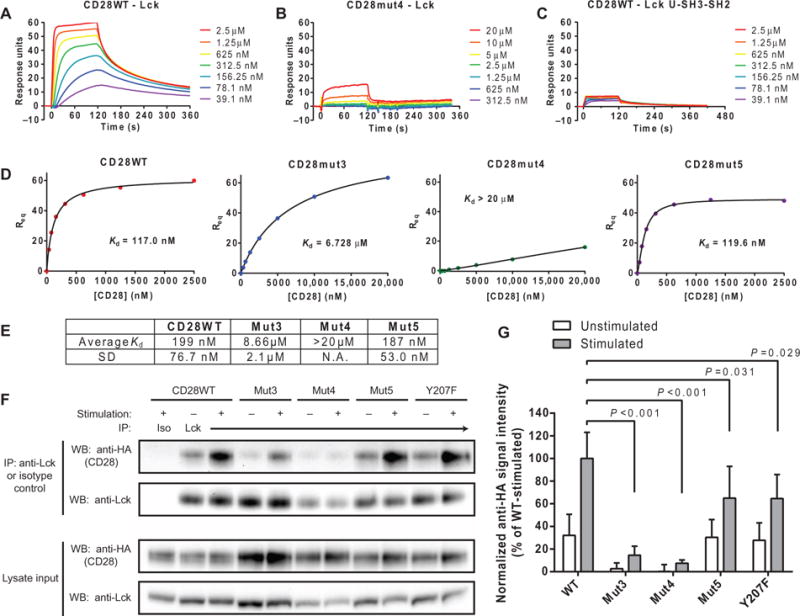Fig. 3. The CD28-Lck binding interaction requires basic residues of CD28CD and the kinase domain of Lck.

(A and B) SPR measurements of the indicated concentrations of disulfide-linked CD28WT (A) and CD28mut4 (B) dimers injected over a surface coated with Lck with 2-min association and 4-min dissociation times. The bulk refractive index change was subtracted on the basis of the signal from a surface with similar immobilized amounts of an irrelevant protein (HLA-DM). (C) The same range of concentrations of CD28WT shown in (A) was injected over a surface with immobilized Lck U-SH3-SH2 domains, and SPR measurements were made as described earlier. (D and E) Kd of the CD28-Lck interaction was determined from a plot of RUs bound at equilibrium (Req) against CD28 concentration through a saturation binding model with Hill slope. (E) Data are geometric means and SD for three independent experiments. The SD was not calculated for Mut4, because the Kd was too high to estimate accurately. N.A., not applicable. (F) OT-I+ hybridomas expressing the indicated HA-tagged CD28 proteins were left unstimulated or were stimulated with APCs and then subjected to immuno-precipitation (IP) with an anti-Lck antibody. Immunoprecipitated samples were then analyzed by Western blotting with anti-HA antibodies. As controls, whole-cell lysates were analyzed by Western blotting with anti-HA and anti-Lck antibodies, whereas immunoprecipitated samples were analyzed by Western blotting with an anti-Lck antibody. (G) Densitometric analysis of the bands in the Western blots shown in (F) was performed, and the amount of HA-CD28 that coimmunoprecipitated was normalized to the average amount in all stimulated CD28WT samples (100%). Data are means ± SD of five experiments. Each mutant-stimulated sample was compared to CD28WT by one-way ANOVA with Dunnett’s correction for multiple comparisons.
